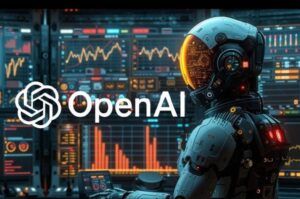By Thomas Deneux, Founder and CEO of Learning Robots (https://learningrobots.ai)
In an era where artificial intelligence (AI) is reshaping our world, understanding this transformative technology has become crucial. As the founder of Learning Robots, I’ve made it my mission to provide “the best way to discover AI” – a playful solution that demystifies AI and allows everyone to “become the master of AI”. Our approach is not just about education; it’s about empowerment, fostering a future where AI is understood, appreciated, and responsibly utilized by all.
The AI Revolution: Fascination and Fear
AI fascinates us with its potential to solve complex problems, enhance productivity, and push the boundaries of human achievement. Yet, it also instills fear – fear of the unknown, fear of job displacement, and fear of a future where machines might outsmart humans.
This dichotomy of fascination and fear is natural. Humans have always been wary of what they don’t understand. However, this wariness becomes problematic when it hinders progress or leads to misinformed decisions. The real danger lies not in AI itself, but in the potential misuse or misunderstanding of this powerful technology.
The Imperative of AI Literacy
Consider this: if only a handful of people among billions truly comprehend AI, we risk creating a world where this technology is poorly regulated, misused, or feared unnecessarily. On the other hand, if everyone possesses even a basic understanding of AI, we can rationally assess its risks and limitations, and harness its potential for the greater good.
This is where Learning Robots comes in. Our mission is to democratize AI knowledge, not just for tech enthusiasts or computer scientists, but as a crucial skill for everyone in the 21st century.
The Learning Robots Approach: Education Through Play

How to make abstract concepts of Machine Learning understandable to everybody? At Learning Robots, we believe that we first need to make them tangible, and by tangible we mean touch them and visualize them. This is why we have unique tool, AlphAI – a robot and a visualization software – and a unique pedagogical approach that combines education with play.
One of our most popular activities is the robot race. Participants work in teams to train their robots, adding data to the training database to improve the robot performance. It is a joyful team-building activity: from 8 to 80 years old, everybody gets so excited when the robot they trained self-drives in the circuit, competing against others for the first position.
Real-World Impact: A Case Study
The effectiveness of our approach is best illustrated through the experiences of our clients. Take, for instance, a French leading luxury brand, who approached us to help with team building and AI acculturation. Our stakeholder, Head of AI at this company, shares his experience:
“The Learning Robots solution for introducing AI to our staff has created a great deal of enthusiasm within our group, and we now want to activate the second “Machine
Learning training” level so we can scale up.”
AI education doesn’t have to be dry or intimidating. It is rather when it appears fun that it can be a catalyst for innovation and collaboration within organizations.
Bridging the AI Knowledge Gap
Beyond corporate team building, we partner with educational institutions to introduce AI concepts to students from an early age. By integrating our tools and methodologies into curricula, we’re helping to prepare the next generation for a world where AI will be ubiquitous.
We organize public events and workshops, reaching out to curious individuals who want to understand AI better. We are actively reaching out to educational leaders, HR directors, and R&D departments to integrate our AlphAI solution into their existing programs. We tailor our solution to their specific needs, whether it’s for university curricula, corporate training programs, or R&D initiatives.
But again: Shouldn’t we fear AI?
AI is not a threat in itself. In fact, it cannot. One of our core teachings is that AI learns by optimizing a goal, and it is only humans who set this goal: AI doesn’t have any ability to set its own goal. Neither can AI optimize vaguely defined goals such as “make humans happy”, as such goals will always need human intelligence and sensitivity to be appreciated.
So the question is rather: what will humans do with AI? For sure there are many dangers of humans misusing AI, as much as there are opportunities for improving our existence using AI. We emphasize that, to make the opportunities win over the threats, we need to close the knowledge gap and increase people’s awareness of how AI works and what it can be used for.
A Call to Action: Join the AI Literacy Movement
As we stand on the brink of an AI-driven future, the need for widespread AI literacy has never been more pressing. We call on educators, business leaders, policymakers, and individuals to join us in this crucial mission. Together, we can build a future where AI is not a source of fear, but a tool for progress, understood and guided by an informed global community.
NB: This article was written by a human making a clever usage of Claude.ai !















